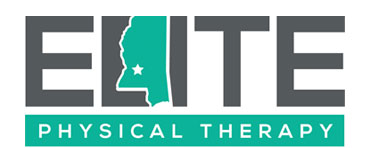Degenerative Disc Disease
What is Degenerative Disc Disease (DDD)?
Degenerative Disc Disease is not really a disease but a term used to describe the process in which the space between the vertebrae decreases. This can be a result of the natural aging process or injury. The spine consists of soft compressible discs that separate your vertebrae. The discs act as shock absorbers for the spine, allowing it to flex, bend, and twist. Degenerative disc disease can take place throughout the spine, but it most often occurs in the discs in the lower back (lumbar region) and the neck (cervical region) causing pain, stiffness, loss of motion and limited daily function. 85% of the population will show evidence of disc degeneration by the age of fifty and 75% will experience back/neck pain at some point in their lifetime. The majority of these cases can be resolved with physical therapy.
Common Causes of Degenerative Disc Disease
- Aging is the most common cause of disc degeneration.
- As the body ages, the discs in the spine dehydrate or dry out, losing their ability to act as shock absorbers between the vertebral bodies.
- Risk factors include smoking, obesity, inactive lifestyle and heavy manual labor.
- Activities such as lifting, shoveling, bending or trauma such as being involved in a motor vehicle accident can lead to disc injury.
Common Symptoms of Degenerative Disc Disease
With symptomatic degenerative disc disease, back pain sometimes radiates to the hips, or there is aching pain in the buttocks or thighs while walking; tingling or weakness in the legs or feet may also be evident. Sitting, lifting and twisting may cause or increase pain and other symptoms. Degenerative changes in the neck can produce similar symptoms in the shoulder, arm or hands.
How We Treat Degenerative Disc Disease
- Stretching and flexibility exercises to improve mobility
- Strengthening the muscles of the spine and extremities
- Pain control may include ice/heat, electrical stimulation or possible use of traction
- Manual therapy
- Proper training in ergonomics and biomechanics to return to function
*Services are not available at all locations. Call or click the location page near you for that center’s services.
What to Expect
Every patient has a unique health history, diagnosis and personal goals. When you come for your first appointment, we will create a personalized treatment plan for you.
We work with most major insurance providers and do our best to help keep the paperwork pain-free. If you’d like to confirm your insurance coverage, please let us know and we can verify when you schedule. If your insurance provider requires a co-pay, we will ask for this payment at each visit. We accept payments by cash, check or credit card.
When to Arrive
On average, a patient’s first visit lasts about an hour. We typically ask patients to arrive 15 minutes early to sign-in, complete paperwork and/or change clothes.
What to Bring
On your first visit, you’ll need to bring your physician referral or prescription (if needed), your insurance card, your primary registration forms, your ID or driver’s license and your co-payment (as applicable). If desired, you may bring a change of clothing.
How it Works
During your first visit, your physical therapist will do an initial evaluation and discuss your plan of care. The therapist uses this information to set goals for your continued treatment. Physical therapy goals may include improved movement, strength, endurance and flexibility, as well as decreased pain. Your subsequent visits will focus on treatment that is based on your diagnosis and individualized goals.
